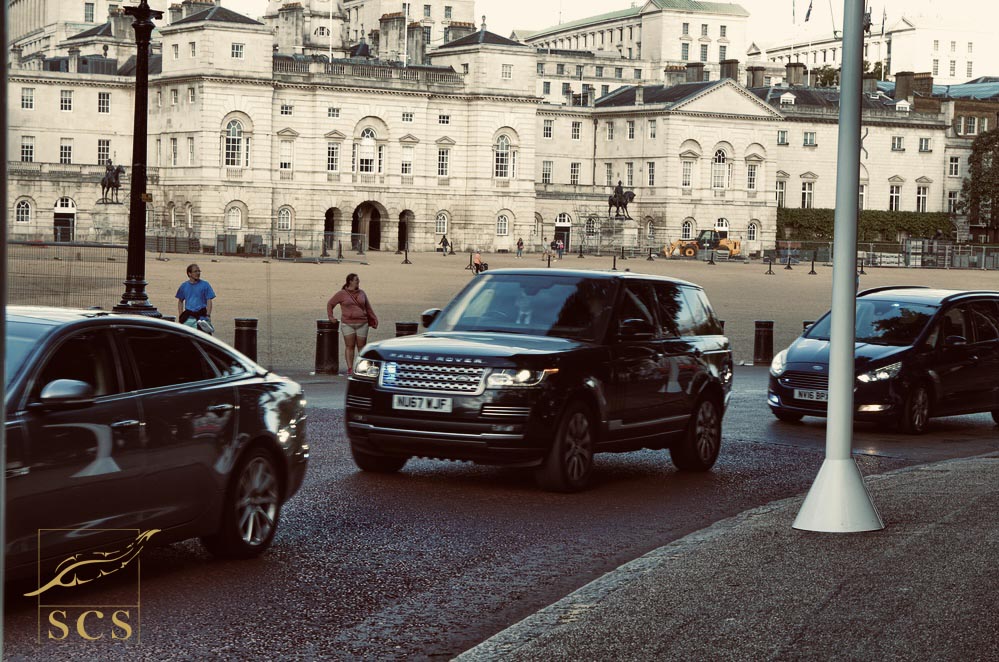The overriding goal of any security operation is preventing an attack from happening in the first place. Therefore, most measures that your executive protection team employs have the sole purpose of preventing the attacker or intruder from being in a position to mount an ambush. An appearance of alertness and tactical driving skills constitute a requirement in order to respond appropriately in the event of an attack or assault involving vehicles.
To be able to provide professional services in tactical driving, we advise that your EP team first deal with the transportation means. Vehicle security is an inseparable component of tactical driving. If the car is damaged, messy, or needs fixing of even the tiniest system malfunction, it is in a subpar position for operational handling ― let alone tactical driving.
Taking Car Care Seriously
All wheeled motor vehicles necessitate a certain degree of attention. The same applies to your cars, even if they have just left the factory. Keeping vehicles guarded and secured at all times is the job that your executive protection team must take seriously.
The famed security author Peter Consterdine writes: It has to be considered an act of gross folly to leave your residence and be blown up in your own vehicle. Even feeling safe and secure in your own residence is an act of mental folly. With the best endeavours, a vehicle, whilst not being used, should still be secured and, if possible, guarded, even whilst in the residence grounds.
That quote sums up perfectly the level of awareness your EP and residential security team must maintain of the surroundings. It goes without saying that the lives of you, your entourage, and your family members depend on it.
Pro-tip: Methodically search the vehicle before use, after servicing or repair, and after being left unattended.
Anyone that does not have a role in the search should remain at a safe distance. Unless a credible suspicion of a threat is established, one person can perform these duties of car examination.
Your EP team ought to memorize the essential search equipment, typically comprised of flashlights and mirrors. Moreover, they may need to open the hood and check for anything out of the ordinary. Most importantly, if upon searching the hood and using mirrors suspicion persists, we recommend the EP team invites the police to perform bomb detection. For this purpose, the authorities will have adequate equipment at hand.
With this equipment under their belt, your executive protection team is ready to provide state-of-the-art protection.
Tactical Driving Officers to the Rescue
But are there situations where tactical driving is unnecessary? How about cases where an abundance of caution is optional?
The short and best answer to these questions is a firm no. If you are an executive or otherwise high-net-worth individual, you are never as safe as you think. On the contrary, if you are on the move, you are within arm’s reach of those intending to inflict harm.
Whatever your industry, chances are you are a frequent traveler. You may be on the road once or a dozen times during a week. In that case, you expose yourself to a multitude of risks and dangers if you drive alone.
In fact, an article by The Wall Street Journal states that “high-profile executives have faced increased physical threats from inside and outside their companies.”
This has led EP teams to find ways to protect company leaders better. Safety standards now include ― but are not limited to ― hiring proficient tactical driving officers.
When corporations take stances on social issues or lay off workers en masse, they expose themselves to a heightened level of risk. Especially when traveling, prominent executives and CEOs need someone to take charge of their security while en route.
Imagine that you are developing an organizational strategy and overseeing day-to-day business activities while having to think about the suspicious car that has been following you around town for the past 20 minutes. That is exactly our point!

Executives need to focus on what they do best and not worry about surviving their next car drive. That is the job of the executive protection team.
So even if you are merely posting and ghosting on social media, you should not have to fear for your life when leaving the office or your home. Marketing experts define the practice of “posting and ghosting” as scheduling online content for publishing on social media platforms and then leaving them with no interaction. This can be especially detrimental due to the unwanted and sudden attention the executive can attract outside, with little knowledge of the security team, as timing is often of the essence.
What Is Tactical Driving Exactly?
Tactical driving, tac driving, or convoy drills entail a set of techniques to help the driver keep all passengers in the principal’s vehicle safe and sound. In other words, it means:
- Driving at the maximum speed possible, given weather and road conditions and the driver’s ability.
- Being fully aware of the vehicle’s capabilities.
- Traveling within legal limits.
Sometimes it may be helpful to have an escort vehicle, also commonly known as the “follow car,” that rears of the primary car. This technique is desirable for:
- Creating room or providing cover in heavy traffic,
- Facilitating constant anti-surveillance and instant reaction to incidents,
- Providing cover for overtaking and quick response capability in case of attack on the principal, and
- Having evacuation and transport options prepared if the principal’s vehicle stops working for whatever reason.
However, depending on the region or country you are traveling to, your executive protection team may need to contact local authorities. For example, in countries like Nigeria, you may want to hire the local mobile police force to ensure protection. They will then allocate resources and staff to provide armed transportation escort.
Pro-tip: This is no guarantee that a foreign police force is capable of providing a tactical driving environment.
All things considered, every country is different. Therefore, your protective detail will need to explore options for each region in which you are doing business or traveling for pleasure.
In Conclusion
If your designated security driver performs vehicle checks regularly, perhaps creating a vehicle checklist might be helpful. Such a list could include the body type, model, index number, doors, location, date, day, and time. This tool must detail the specific areas of search and list the search procedure in its designated areas.
Tactical driving is virtually impossible if vehicle checks and mechanical inspections did not take place prior. Therefore, it is an integral part of executive protection.
The proverbial EP team begins the day in your proximity, takes you to work, and returns you home at night. Most of their job may not include tactical driving or any driving for that matter.
However, in the most sensitive and crucial of moments, tactical driving skills ― or a lack thereof ― could make the difference between safely returning home or not at all.
Companies like SCS work precisely to ensure that the latter is avoided at all costs.

